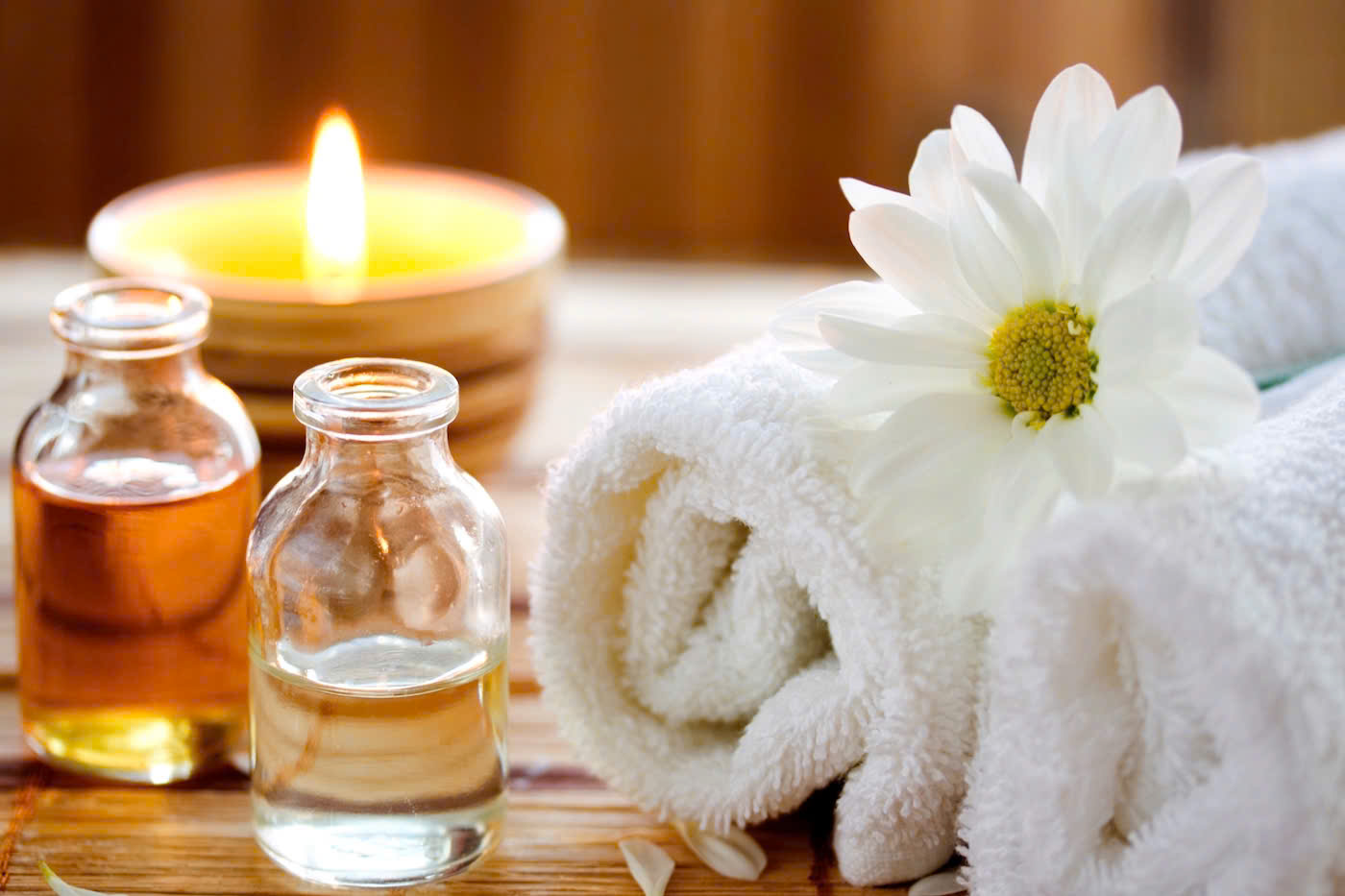Hot Oil Massage: Benefits, Types & How It Works
Hot oil massage is a traditional healing practice that has been revered across various cultures for centuries. This therapeutic technique involves applying warm oils to the body, combined with gentle massage strokes, to promote relaxation, healing, and overall well-being. Whether you’re seeking relief from muscle tension, skin nourishment, or mental calmness, hot oil massage offers numerous benefits rooted in both ancient wisdom and modern science.
In this comprehensive guide, we will explore what is hot oil massage, discuss its myriad benefits, explain how it works, and detail the different types of hot oil massage techniques. Understanding these aspects will help you appreciate the depth and versatility of this age-old therapy, making it easier to incorporate into your wellness routine.

Hot Oil Massage
The practice of hot oil massage is more than just a pampering session; it’s a holistic approach to health that combines touch, warmth, and natural oils to stimulate the body’s energy pathways. This method is prevalent in Ayurvedic medicine, traditional Chinese medicine, and other holistic healing systems. The core idea revolves around using heated oils infused with herbs and essential oils tailored to specific health needs or skin types.
A typical session involves heating selected oils—like sesame, coconut, or herbal-infused blends—to an optimal temperature before carefully massaging them onto the body. The warmth enhances the oil’s penetration into the skin, allowing nutrients and medicinal properties to reach deeper tissues. Its therapeutic effects extend beyond superficial relaxation to encompass chronic pain relief, improved circulation, and emotional balance.
What makes hot oil massage unique is its ability to harmonize physical, mental, and spiritual facets of health. The tactile experience combined with the soothing heat can bring about profound relaxation, reduce stress hormones, and promote better sleep. Moreover, it’s adaptable to individual needs, whether for detoxification, skin health, or muscle recovery.
The Role of Temperature and Technique
The temperature of the oil is crucial—it must be warm enough to relax muscles but not so hot as to cause discomfort or burns. The massage technique involves rhythmic strokes, kneading, and pressure application, often synchronized with breathing exercises to enhance relaxation. The practitioner’s skill determines how effectively the heat and oils are used to maximize therapeutic outcomes.
What is Hot Oil Massage
What is hot oil massage? At its core, it is a therapeutic massage process that employs heated oils applied systematically over the body parts. Unlike regular massage therapies that might use cool or room-temperature oils, hot oil massage emphasizes heat as an integral component. This warmth helps open pores, soften tissues, and facilitate the absorption of nourishing oils.
Typically, what is hot oil massage entails is a combination of massage techniques—ranging from gentle strokes to more vigorous kneading—performed with warm oils customized to person-specific conditions. It’s often performed in spa settings, Ayurvedic clinics, or at home with proper guidance, ensuring the right balance of temperature and pressure.
This treatment is deeply rooted in ancient healing traditions, especially Ayurveda, where it is considered a vital part of maintaining balance within the body’s doshas—Vata, Pitta, and Kapha. The process promotes not merely physical relaxation but also mental clarity and emotional stability by calming the nervous system.
Differentiating Hot Oil Massage from Regular Massage
While conventional massage offers relaxation and minor relief from muscular pain, what is hot oil massage provides an added dimension through the infusion of heat and medicinal oils. The heat amplifies the massage’s efficacy by:
- Increasing blood flow to targeted areas,
- Enhancing lymphatic drainage,
- Accelerating toxin removal,
- Deepening muscle relaxation.
The personalized nature of what is hot oil massage allows therapists to address specific ailments like arthritis, back pain, skin issues, or stress-related disorders more effectively than standard massage methods.
Cultural Significance and Modern Adaptations
Historically, this form of massage has been a staple in Indian, Chinese, Thai, and Middle Eastern wellness practices. In recent years, its popularity has surged globally, leading to innovations like aromatherapy hot oil massages, herbal infusions, and even cold or lukewarm variations for sensitive skin.

Benefits of Hot Oil Massage
The benefits of hot oil massage extend across physical, mental, and emotional domains, making it a holistic therapy suitable for diverse health goals. Understanding these benefits underscores why many people incorporate this practice into their self-care routines or seek professional sessions regularly.
Physical Health Benefits
One of the primary advantages is the promotion of physical health. The deep penetration of warmed oils nourishes the skin, improves elasticity, and encourages cell regeneration. It can help alleviate musculoskeletal issues such as muscle stiffness, joint pains, and chronic conditions like arthritis. The heat increases circulation, delivering oxygen and nutrients more efficiently to tissues, which accelerates healing and reduces inflammation.
Furthermore, hot oil massage stimulates the lymphatic system, aiding in detoxification by encouraging the removal of bodily wastes. It also supports cardiovascular health by promoting better blood flow, thereby lowering blood pressure and reducing the risk of heart-related problems.
Mental and Emotional Benefits
Beyond the physical realm, hot oil massage is renowned for its capacity to ease mental stress. The soothing warmth combined with gentle touch triggers the release of endorphins and serotonin—neurotransmitters responsible for feelings of happiness and relaxation. This can significantly lower cortisol levels, the hormone associated with stress.
Regular sessions may alleviate anxiety, improve sleep quality, and foster emotional stability. The sensory experience also creates a meditative environment that helps individuals reconnect with their bodies, cultivating mindfulness and mental clarity.
Skin and Cosmetic Benefits
The nourishing qualities of herbal oils used in hot oil massage enhance skin health by moisturizing, softening, and improving elasticity. It encourages exfoliation by loosening dead skin cells, revealing a more radiant complexion. Certain herbal infusions can even target skin conditions such as dryness, eczema, or psoriasis.
Moreover, the massage stimulates oil production naturally, helping to balance dry or oily skin types, leading to healthier, glowing skin over time.
Additional Advantages
Other notable benefits include alleviation of headaches, reduction of cellulite, improvement in posture, and relief from menstrual discomfort. Because of its deep relaxing impact, hot oil massage also serves as an excellent stress management tool, fostering a sense of peace and well-being.
| Benefit Category | Key Outcomes | Supporting Explanation |
|---|---|---|
| Physical | Pain relief, improved circulation, detoxification | Warmth and oil penetrate tissues, accelerate healing |
| Mental | Reduced stress, better sleep, emotional stability | Endorphin release, relaxation response |
| Skin | Hydrated, youthful, radiant skin | Nutrients absorbed deeply, enhanced cell renewal |
| General Wellness | Balance, vitality, overall health | Harmonizes mind-body connection |
How it Works
Understanding how it work is central to appreciating the profound effects of hot oil massage. The process is based on a combination of thermal therapy, acupressure principles, and biochemical interactions between oils and tissues.
Heat Penetration and Tissue Relaxation
The primary mechanism involves heat transfer. When warm oil contacts the skin, it raises the temperature locally, which causes blood vessels to dilate. This vasodilation results in increased blood flow, bringing oxygen and nutrients to the tissues while flushing out toxins.
This thermal effect reduces muscle stiffness, relieves tightness, and enhances flexibility. It also softens connective tissues and fascia, enabling smoother movement and reduced pain.
Enhanced Absorption of Therapeutic Oils
The warmth enhances the permeability of the skin, allowing therapeutic ingredients—such as herbs, essential oils, or medicated extracts—to penetrate more deeply. This facilitates targeted healing, whether for skin rejuvenation, anti-inflammatory effects, or emotional calming.
Different oils have unique properties; for instance:
- Coconut oil is deeply moisturizing.
- Sesame oil is warming and detoxifying.
- Herbal-infused oils contain specific phytochemicals for various health concerns.
Nervous System Modulation
How it work also involves modulation of the nervous system. Gentle, rhythmic strokes activate mechanoreceptors and stimulate the parasympathetic nervous system—the branch responsible for rest and digest. This induces a relaxation response, decreases stress hormones, and promotes mental calmness.
Psychological Impact
The sensory experience—warmth, aroma, and touch—stimulates the limbic system, the brain’s center for emotion regulation. This connection explains why hot oil massage can lift mood, reduce anxiety, and foster emotional resilience.
Physiological Processes Summary
| Process | Explanation |
|---|---|
| Vasodilation | Widening of blood vessels for increased circulation |
| Increased Permeability | Oil penetrates tissues more effectively |
| Nervous System Activation | Parasympathetic stimulation leads to relaxation |
| Toxin Removal | Lymphatic drainage facilitated by heat and massage |
Types of Hot Oil Massage
Various types of hot oil massage techniques have evolved to cater to specific needs, preferences, and cultural traditions. Each type employs distinct methods, oils, and focus areas, making hot oil massage a versatile therapy.
| Type | Focus Area | Characteristics |
|---|---|---|
| Ayurvedic Abhyanga | Whole body, constitutional balance | Synchronizes with dosha types, uses herbal oils |
| Shirodhara | Head, scalp, mental clarity | Continuous pouring of warm oil on the forehead |
| Herbal Hot Oil Massage | Specific ailments or skin conditions | Infused with medicinal herbs targeting particular issues |
| Thai Hot Oil Massage | Muscular relaxation, flexibility | Incorporates stretching alongside warm oil massage |
| Aromatherapy Hot Oil Massage | Mood enhancement, emotional balance | Uses essential oils with aromatic properties |
| Deep Tissue Hot Oil Massage | Chronic pain, musculoskeletal issues | Focused pressure, intense heat application |
Ayurvedic Abhyanga
Ayurvedic abhyanga is one of the most popular forms, involving full-body massage with warm, herbal-infused oils tailored to one’s dosha. It aims to balance internal energies, improve immunity, and detoxify. The practitioner uses specific strokes aligned with marma points (energy centers), creating a harmonizing effect.
Shirodhara
Distinct from the typical massage, Shirodhara involves a continuous, gentle pour of warm oil onto the third eye area. It’s designed primarily to calm the mind, reduce stress, and improve sleep quality. Though not a full-body massage, it exemplifies how heat and oil are used therapeutically.
Herbal Hot Oil Massage
Incorporating medicinal herbs into the oil blend, this type of hot oil massage targets particular health issues such as inflammation, skin infections, or hormonal imbalances. The herbal infusion enhances the therapeutic benefits, providing a customized approach.
Regional Variations
Different regions have their adaptations:

- Thai traditions blend hot oil massage with stretching and acupressure.
- Chinese practices integrate meridian theory for targeted energy flow.
- Middle Eastern techniques focus on nourishing the skin and promoting relaxation.
Each variation highlights the adaptability of hot oil massage to diverse cultural philosophies and health priorities.
Conclusion
Hot oil massage is a timeless therapeutic modality integrating heat, nourishing oils, and skilled touch to promote holistic health. From what is hot oil massage to its extensive list of benefits, understanding how it works reveals the profound impact this practice can have on the body, mind, and spirit. With various types of hot oil massage techniques suited for different needs, it remains a versatile and effective approach for achieving relaxation, healing, and vitality. As more people seek natural remedies and integrative therapies, embracing the richness of hot oil massage continues to offer a path toward wellness grounded in tradition and scientific insight.https://jobedubaispa.com/massage-therapy/
Conclusionhttps://www.google.com/maps?q=Jobe+Vip+Spa+_+Massage+Center-+home+service+Bur+Dubai,+bur+Dubai+-+Majestic+city+retreat+hotel+,103+al+mankhool+-+24th+Floor+-+bur+Dubai+-+Dubai+-+C%C3%A1c+Ti%E1%BB%83u+V%C6%B0%C6%A1ng+qu%E1%BB%91c+%E1%BA%A2+R%E1%BA%ADp+Th%E1%BB%91ng+nh%E1%BA%A5t&ftid=0x3e5f43599529a971:0xefca6924dffe80dd&entry=gps&lucs=,94255443,94242613,94224825,94227247,94227248,94231188,47071704,47069508,94218641,94203019,47084304,94208458,94208447&g_ep=CAISEjI1LjExLjMuNzM1NDg4OTYwMBgAINeCAyp1LDk0MjU1NDQzLDk0MjQyNjEzLDk0MjI0ODI1LDk0MjI3MjQ3LDk0MjI3MjQ4LDk0MjMxMTg4LDQ3MDcxNzA0LDQ3MDY5NTA4LDk0MjE4NjQxLDk0MjAzMDE5LDQ3MDg0MzA0LDk0MjA4NDU4LDk0MjA4NDQ3QgJWTg%3D%3D&skid=4e00f21a-2229-43a0-af27-a41ea36c26e9&g_st=com.google.maps.preview.copy
In summary, hot oil massage stands out as a holistic healing practice that combines warmth, nourishment, and expert touch to deliver wide-ranging health benefits. Its ability to relax muscles, detoxify tissues, soothe the nervous system, and promote emotional well-being makes it an invaluable addition to any wellness regimen. By exploring its various forms and understanding how it works, individuals can harness this age-old therapy for a healthier, more balanced life. Whether performed professionally or at home, incorporating hot oil massage can serve as a powerful tool in cultivating physical vitality and inner peace.https://jobedubaispa.com/
